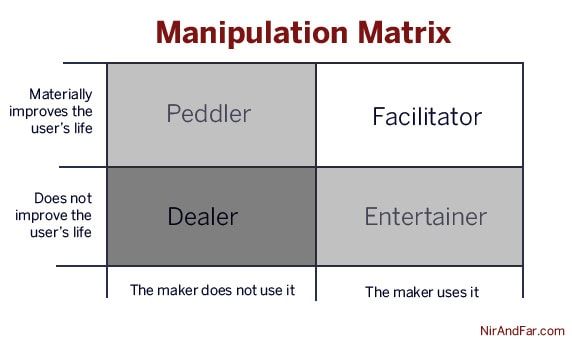“Addictive apps”
Skinner’s box
Natasha Schull’s Addiction by Design
,
BJ Fogg’s “captology”
motivated, capable, and triggered
Fogg’s student
One of his alumni, Nir Eyal, went on to write a successful book, aimed at tech entrepreneurs, called “Hooked: How to Build Habit-Forming Products”. “I look at some of my former students and I wonder if they’re really trying to make the world better, or just make money,” said Fogg. “What I always wanted to do was un-enslave people from technology.” (Leslie 2016)
Natasha Dow Schüll
Nir and BJ are nice guys. But they overestimate the extent to which they’re empowering people, as opposed to helping to hook them. (Leslie 2016)
Nir Eyal’s Hooked
Feedback loops are all around us, but predictable ones don’t create desire [like “the hook”]…. Introducing variability multiplies the effect, creating a frenzied hunting state, which suppresses the areas of the brain associated with judgment and reason while activating the parts associated with wanting and desire. (EyalHoover 2014, “Hooked”, p. 8)
Nir Eyal’s The Morality Of Manipulation

Let’s admit it, we in the consumer web industry are in the manipulation business… We call these people “users” and even if we don’t say it aloud, we secretly wish every one of them would become fiendishly addicted. (Eyal 2017)
Social Proof / Validation / Consensus?